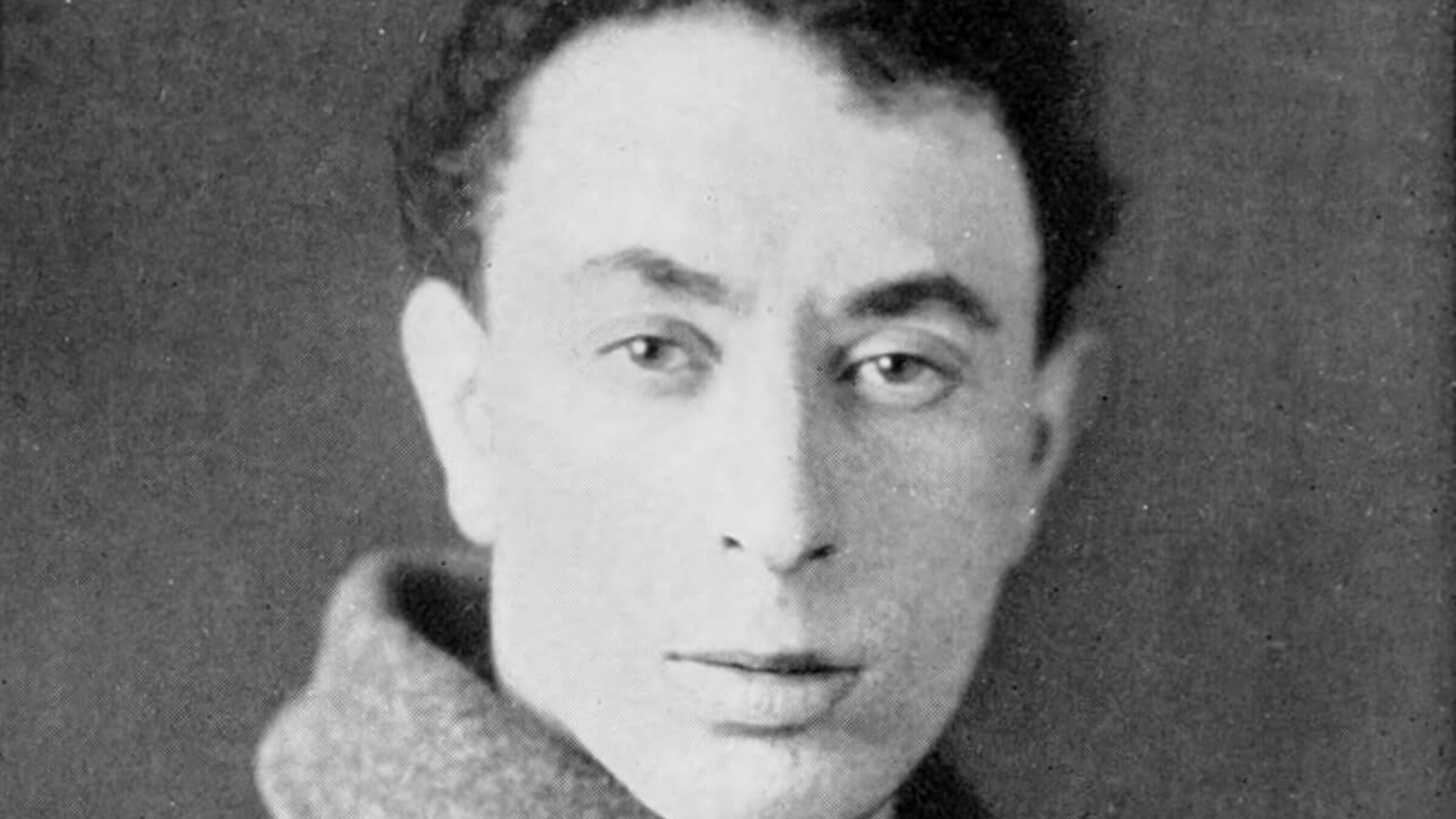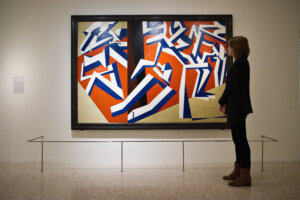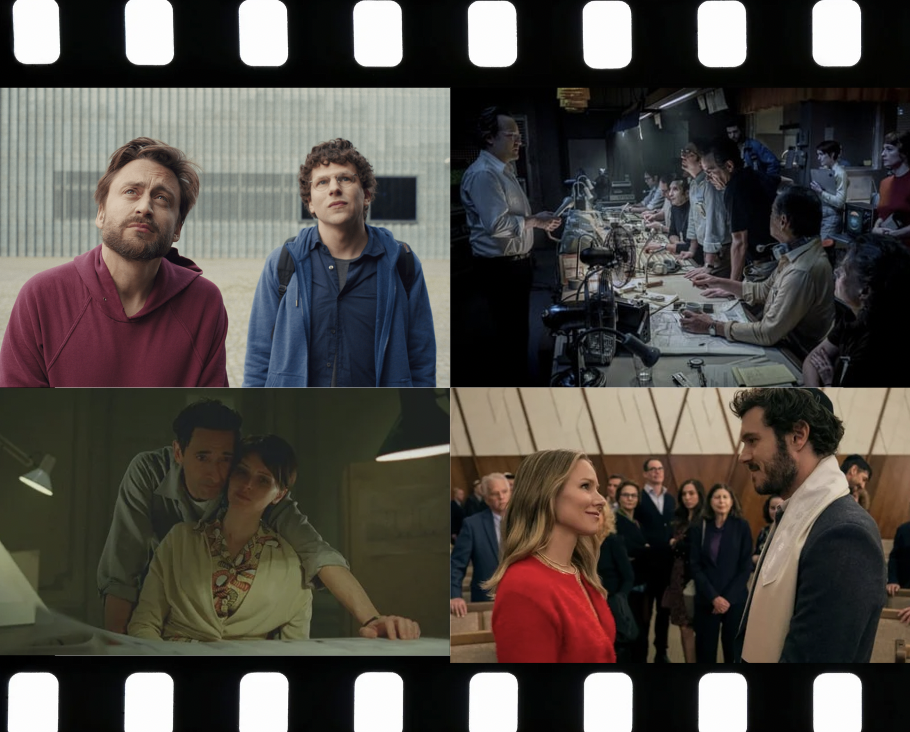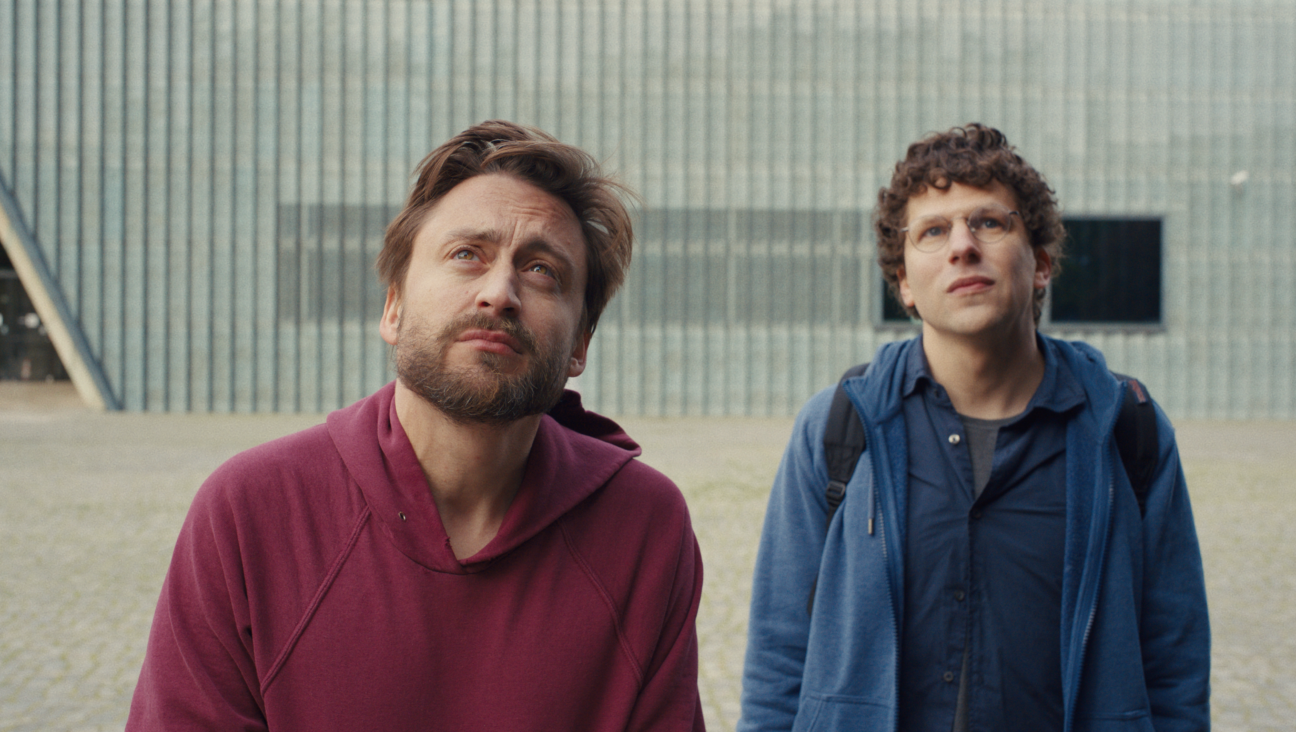Raised in a tenement, killed in battle at 27 — the all-too-brief life of a great Jewish artist and poet
Isaac Rosenberg won fame and respect well after his death in WWI

Poet and artist Isaac Rosenberg, who died in WWI at the age of 27. Photo by Wikimedia Commons
Unlike the well-educated Siegfried Sassoon, a war poet of Jewish descent featured in the 2021 movie Benediction and briefly in the Jewish Museum of New York’s exhibit on his wealthy family, Isaac Rosenberg was a total autodidact. The Jewish war poet and painter left school at 14 in order to support his impoverished family in their tenement apartment in London’s East End.
The Rosenbergs had moved from Lithuania to England after the birth of Isaac’s oldest sister. His father Dovber, who changed his name to Barnett, was an itinerant peddler, and his mother Hacha was a talented lacemaker and seamstress who tried to make up for her husband’s failures to provide by selling her own homemade work.
Living at first in Bristol and then in London’s densely populated Jewish neighborhood of Stepney in the East End, Rosenberg grew up the second oldest of six children.
Apprenticed to an engraver — an artisan who transferred images to metal plates for mass reproduction in books and newspapers — Rosenberg had to work long hours for little pay as a teenager.

He took art classes at night and fell in with the “Whitechapel Boys,” a loose affiliation of young Jewish artists who included the Futurist painter David Bomberg and the portraitist Mark Gertler. While painting copies of Old Masters in the National Gallery, Rosenberg acquired his first patrons, a set of well-to-do Jewish women who purchased his paintings and paid his tuition at the Slade School of Art.
Rosenberg was a bit of a difficult character, and his absent-mindedness and carelessness could come off as rude, which eventually strained relations with his upper-class patrons, according to Joseph Cohen’s 1975 biography Journey to the Trenches. The Hebrew Educational Aid Society paid his final two semesters of tuition at the Slade School, and also sponsored a trip to South Africa to visit his married sister and recover some of his health in 1914. He was a short, frail young man, as many East End Jews were at the time, due to malnutrition and his tenement upbringing.
Rosenberg’s art, both his painting and poetry, was influenced more by movements like the Romantics and the Pre-Raphaelites than his modernist contemporaries; he had no interest in Cubism.
He was not an observant Jew, unlike his father who had trained as a rabbi in Lithuania. But as biographer Cohen put it, for Rosenberg “there was an additional dimension from which the Jewish artists and writer could draw strength: the ‘life of ideas’ borne out of centuries of agony and struggle.”
After returning from South Africa, Rosenberg self-published Youth, a collection of poetry, which was a follow up to his first book, Night And Day. He printed a hundred copies of each, but only a few of them sold. His efforts to attract the attention of famous poets such as Ezra Pound, were mostly unsuccessful, but he managed to slowly gain lesser-known supporters.
Eventually, against his parents’ wishes, Rosenberg enlisted in the Army as a private in late 1915. He hoped the Army would make him healthier, but more importantly he wanted to be able to send money home to support his mother. He joined a “Bantam” battalion, for those under 5’3”. During his service, he continued to write poetry, and his best-known works came from his time in the trenches in France.
In his most famous poem, “Break of Day in the Trenches,” he examines the perspective of a rat with “cosmopolitan sympathies” who feels equally at home in both English and German trenches. The parallels to Jewish experience are clear; and in his poem “The Jew” he examines the antisemitism he faced in the Army:
The blonde, the bronze, the ruddy,
With the same heaving blood,
Keep tide to the moon of Moses.
Then why do they sneer at me?
He turned down a promotion to lance-corporal, feeling it would signal a closer alignment with the Army he had no interest in — “I never joined the Army from patriotic reasons. Nothing can justify war,” he wrote to one patron.
During training he began a verse drama, Moses, about the Biblical figure as a young man. Working on the drama distracted him to the point that he forgot to carry out orders one day and was harshly punished.
He self-published Moses shortly before his battalion embarked for France. Serving on the front lines as a private throughout the rest of 1916 and 1917, he endured heavy fighting and had to step over bodies in order to transport barbed wire to No Man’s Land.
His intellect caught the attention of some superiors who gave him desk duties behind the lines, but because he was a capable and relatively healthy soldier, he always ended up back in the trenches, where lice and trench-foot prevailed; the endless labor made Rosenberg feel, as he put it, like a slave.
Even so, he always found time to write poetry to send home; his verses became more honed and powerful.“This war, with all its powers for devastation, shall not master my poeting,” he wrote. He planned to spend his time after the war writing a verse drama about the Biblical character of Lillith, and working as an art teacher to support himself.
After returning from leave in September of 1917 he went back to the main line of fighting, and almost immediately fell ill and was hospitalized for two months.
When he was released from the hospital, he applied for a transfer to a Jewish battalion, fighting in the Middle East, but his application was never received or processed. Instead he went back to the front lines, and was killed by Germans near Arras on April 1, 1918 during the spring offensive. He was 27 years old.
His last poem, “Pale Cold Days” sent home the week he died, was inspired by his desire to be with the “Judains” fighting in Palestine: “Like waifs their spirits grope / For the pools of Hebron again — For Lebanon’s summer slope.”
After his death, his younger sister Annie devoted herself to his legacy and helped ensure that his work was published posthumously, even as his fame was vastly eclipsed by other poets like Rupert Brooke and Wilfred Owen, who also died during the war.
By the middle of the 20th century, he gained wider recognition and critical acceptance; his admirers included esteemed poets like Edith Sitwell and Robert Graves.
In 1985 Rosenberg was commemorated on a war poets memorial in Westminster Abbey in the Poet’s Corner alongside his contemporaries, and in 1987 a blue plaque was unveiled at Whitechapel Library, where he had spent many hours teaching himself about poetry and literature when he was a teenager.
Because he died during heavy fighting in territory the Germans soon reclaimed, his body was never identified. He was buried with the soldiers he died alongside; his gravestone in France is marked with a Star of David that reads “I. Rosenberg — Buried near this spot — Artist & Poet.”
















